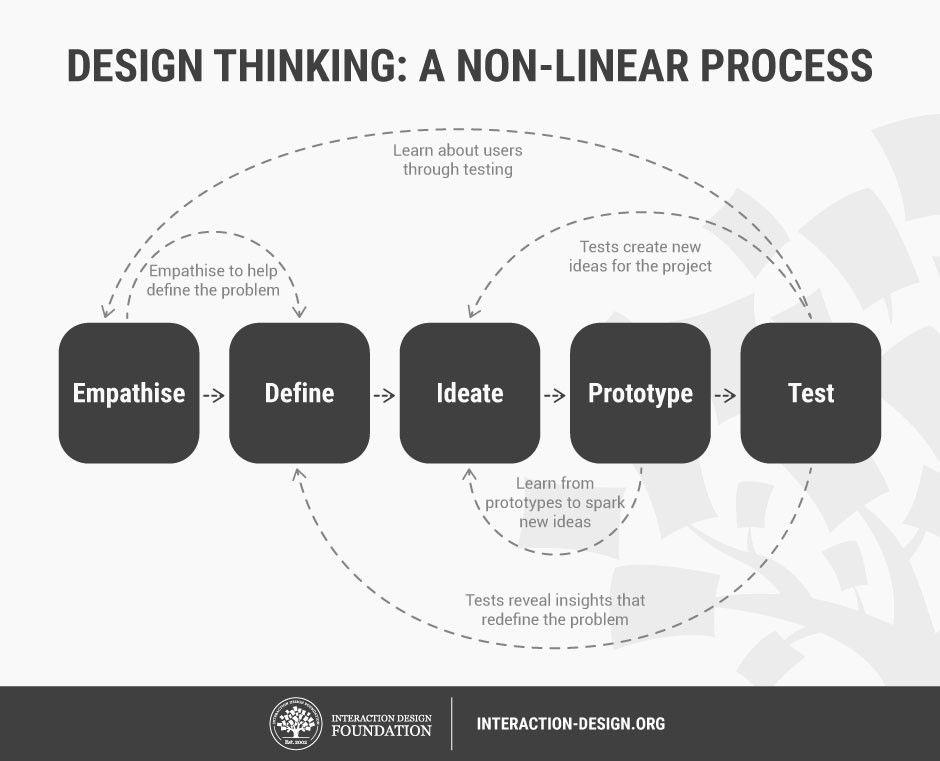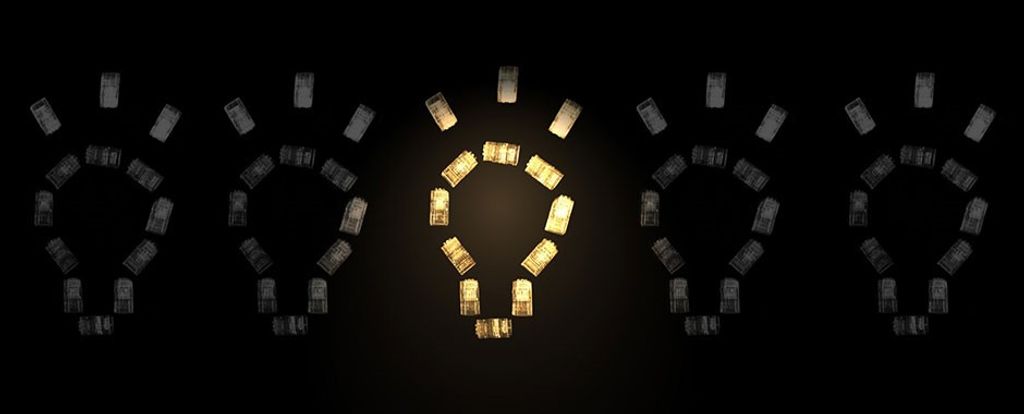The Ideation Brainstorm
Several designers believe that creating sketches and starting at the beginning of the creative process isn’t necessary. They find that they waste their time drawing 30-40 sketches of logos and wireframes to only use less than half. Although it does occupy a good amount of time, sketching out and putting your thoughts onto paper is exactly what every designer needs to do to achieve a successful final product.
Even if not every project is a success user-testing-wise, it is still an excellent practice to regularly familiarize oneself with how to sketch out and visually explain the ideas spinning around in your head. As the concept of Design Thinking is rapidly becoming an integral part of the graphic design industry as well as many other fields, the process of ideation is being incorporated more often into the workspace.
In an article for the Interactive Design Foundation, Rikke Friis Dam and Teo Yu Siang write, “People need guidance, inspiration, and activities, physically and cognitively, to get the process started. Ideation is a creative and concentrated process; those involved should be provided with an environment that facilitates free, open, and the non-judgmental sharing of ideas.” Not every idea is going to be a monumental success story but exploring every avenue that pops into a designer’s head allows for the process of trial and error to prevail.

Unlike the typical boardroom style meeting, one is used to, Design Thinking, and specifically, the Ideation part of the process requires all participants to be treated as equals so that everyone’s ideas are heard and placed on sticky notes or written on a whiteboard to be photographed and documented later.
It is also vital to set ground rules to not sway from the topic at hand and to set a time limit as well as encourage wild and exciting ideas that could lead to new products and designs that were never thought of previously due to a difference in thinking and fear of rejection. In Taylor Green’s Medium article, “What is Design Thinking and Why is it Important”, she relays, “If you can understand the customer’s “why,” then you will be able to better convey the “why” of your business to them. In essence, it’s about building a connection between the product and the user.”
As a designer, you must put yourself in your user’s shoes and understand how they act and think, especially when using your product, app, or service. This allows you to understand what is needed to successfully use your product as well as what truly matters to the public and these users in general. Problems regularly arise when questions are not asked or even thought about in the ideation process, simply because people do not care for the people they are designing for.
Recently, in 2021, Tony Meazell described in a Koombea article, “The process begins with a thorough review of the app idea and the components it will need to see if the application can feasibly be created. If the initial review determines that the app concept as it currently stands cannot be built, the next step is to refine the concept or explore alternative solutions that will allow the application to be built.” At face value, the Design Thinking process allows companies to save money, time, and resources in the long run while simultaneously keeping the user at the forefront of the design process to fulfill the needs of what is necessary to be accomplished.


